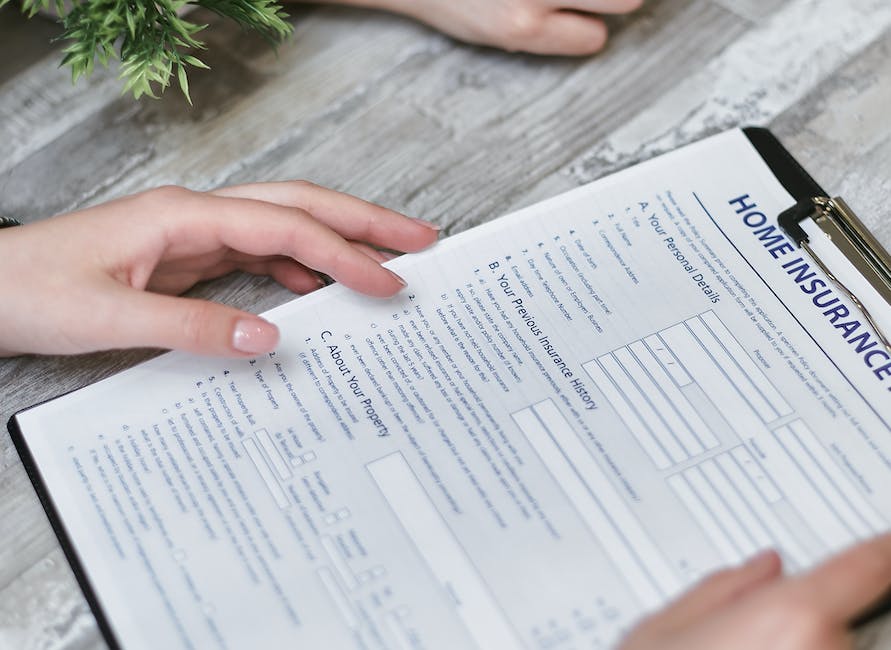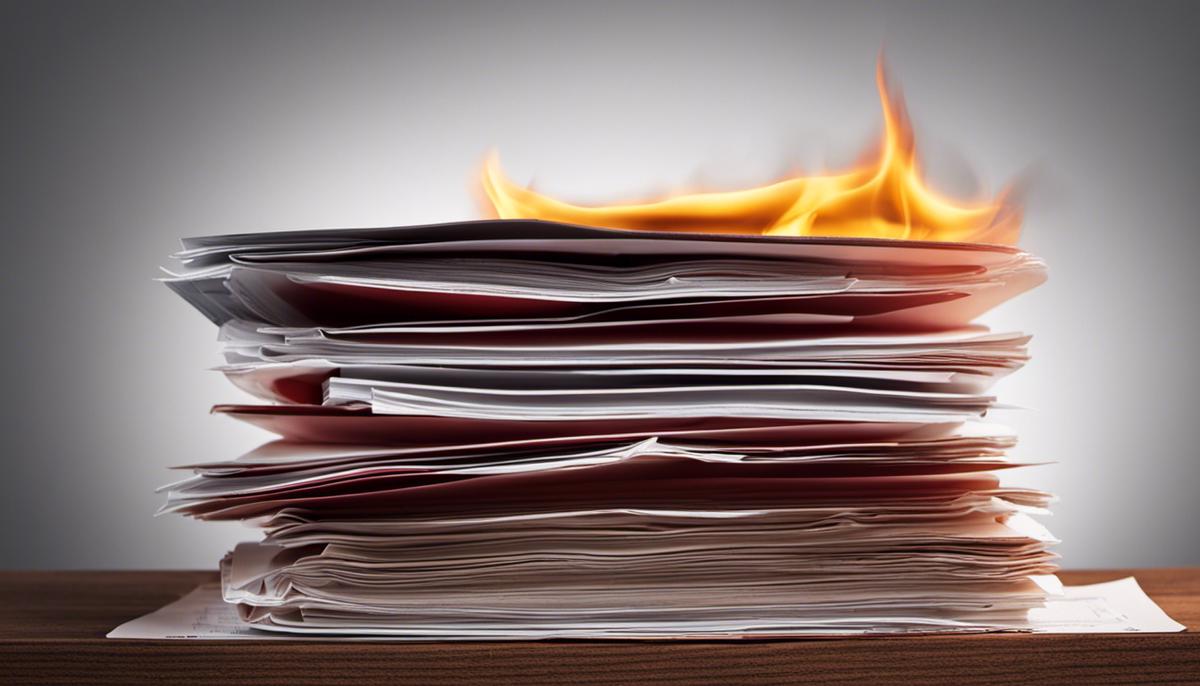Your home is one of your most important investments, and having the right home insurance coverage is critical to protecting it.
Home insurance is an essential aspect of homeownership that offers protection for your most significant asset. It safeguards against financial losses that may arise due to unforeseen circumstances such as natural disasters, theft, or damage. In our society where uncertainty is a daily aspect, it’s crucial to equip yourself with knowledge and understanding about securing the right home insurance – it’s not just about having one but about ensuring it serves its purpose when you most need it. Our overview explores the fundamentals of home insurance, the critical elements of a policy, the variables that affect premiums, and guides on making an informed decision while choosing the best coverage for your home.
What is Home Insurance?
What is Home Insurance?
Home insurance, or homeowners insurance, is a type of property insurance that covers losses and damages to an individual’s house and assets in their home. It also provides liability coverage against accidents within the home or on the property. As with any form of insurance, home insurance serves as a safety net, helping homeowners recover financially in the event of unexpected incidents or natural calamities. It covers financial losses due to fire, theft, storms, and other perils listed in the policy.
Importance of Home Insurance
One of the primary reasons home insurance is so vital is the level of protection it offers to homeowners against loss from theft, fire, or other covered events. It helps to repair or rebuild your home if it is damaged or destroyed by an insured event. Aside from structural damage, home insurance can also protect personal belongings within the home.
Home insurance also protects the homeowner from liability. This means if someone is injured while on your property or if you accidentally cause damage to a neighbor’s property while, say, trimming a tree, the liability portion of your homeowners insurance would come into play. This is a critical aspect of home insurance, given the potentially exorbitant cost of medical bills or legal fees, should you be sued.
Types of Home Insurance policies
There are various types of homeowners insurance policies available, each designed to cover different types of incidents and levels of damage. These include:
- HO-1: This is the most basic coverage that insures your home against a limited list of perils.
- HO-2: This type of policy includes everything under HO-1 and additional perils, such as falling objects or damage from the weight of snow, ice, and sleet.
- HO-3: This is the most common type of homeowners’ insurance policy, offering a more comprehensive coverage. It insures your home against all perils except those explicitly excluded in the policy.
- HO-5: This is a premium policy that offers the most extensive coverage, protecting your home and personal property against all perils unless explicitly excluded.
All these different types have their unique features and levels of coverage, and are worth considering based on your home’s value, location, and your financial capability.
Navigating the Terrain of Home Insurance Selection
When it comes to selecting a home insurance policy, it’s critical to opt for one that full covers the expense of repairing or reconstructing your home should it get damaged. This necessitates taking into account the prices of construction materials and the cost of building work in your locality. Furthermore, it’s vital that the policy you choose covers the complete value of your personal items and offers sufficient liability coverage to safeguard your assets.
Never forget to contrast and compare quotations from a variety of insurance carriers, and fully comprehend what each policy includes and excludes before reaching a final decision.

Components of a Standard Home Insurance Policy
Decoding the Elements of a Standard Home Insurance Policy
A conventional home insurance policy is typically composed of coverage for the physical structure of your home, personal possessions, liability, and any additional living costs. These are the fundamental components that comprise most home insurance policies, each offering its unique type of protection.
Structural Coverage
Structural coverage, often referred to as ‘dwelling protection’, is perhaps the most obvious aspect of home insurance. This type of coverage is designed to pay for the repairs or rebuilding of your home in the event it is damaged or destroyed by a covered peril such as fire, hail, lightning, or windstorms. Included in the structural coverage is the main house and attached structures like a garage. However, structures separate from the house like a detached garage or fence may need separate coverage.
Typically, coverage exclusions apply to damage resulting from floods, earthquakes, and poor maintenance. For such exclusions, separate policies or endorsements may need to be purchased if coverage is desired. Structures like sheds or guest houses may also fall under other structures coverage depending on the specifics of your policy.
Personal Belongings Coverage
Coverage for personal belongings provides protection for your items if they are stolen, damaged, or destroyed as a result of a covered event. This can cover everything from furniture and appliances to clothing and electronics. Most home insurance policies will also extend this coverage to personal belongings that are off-premises—meaning your belongings will be covered anywhere in the world.
However, some belongings like jewelry, watches, and furs have capped limits of liability if stolen. For these types of items, you may want to consider scheduled personal property coverage for their full appraised value.
Liability Protection
Liability protection is designed to cover costs associated with a lawsuit if a person is injured on your property or if you or a family member cause damage to someone else’s property. This part of your homeowner’s insurance can cover both court costs and any awards you’re found liable for.
In addition to this, your policy’s liability coverage also includes no-fault medical coverage, meaning if a friend or neighbor is injured in your home, they can simply submit their medical bills to your insurance company. This allows their expenses to be paid without a liability claim being filed against you.
Additional Living Expenses (ALE)
Finally, additional living expenses coverage is designed to cover the costs associated with living away from your home if it becomes uninhabitable due to a covered loss. This could include hotel bills, restaurant meals, and other daily living expenses that exceed what you would typically incur. This coverage is sometimes referred to as ‘Loss of use’ coverage.
ALE coverage has its limits, and some insurance providers set the limit as a percentage of the amount of coverage on your home. Additionally, there may be time restrictions as to how long ALE benefits can be claimed.
For anyone to have a firm grip on their home insurance policy, understanding its key elements becomes imperative. Ascertaining what exactly each segment covers will serve as a preparation for any claims in the future. By regularly reviewing your policy, you are ensuring it stays in sync with your ongoing situation and potential needs.

Factors Influencing Home Insurance Premiums
Geographical Implication on Your Home Insurance Costs
Several factors contribute to your home insurance premium, with your home location being a significant one. For instance, regions with high crime rates usually command higher premiums, given the elevated risk of property damage or theft. Moreover, homes located in areas susceptible to natural disasters such as wildfires, hurricanes, or floods are naturally disposed to higher premiums due to the considerably increased risk of property damage or loss.
The Age and Type of Home
The age and type of a home also significantly factor into the cost of a home insurance premium. Older homes, particularly those with outdated plumbing, wiring, and heating systems, usually have higher premiums as they pose more risks compared to newer homes. The materials used to build a home can also impact the premium. For instance, houses made of wood are more prone to fire damage and as such, may cost more to insure compared to brick or stone homes.
Claim History
Insurers consider your claim history when determining your home insurance premium. A history of multiple claims can result in a higher premium as insurers view it as an indicator of increased future risk. Additionally, if the previous owner of your home had multiple insurance claims, this might also increase your premiums. This is due to the assumption that the house may have underlying issues causing the frequency of claims.
Deductibles
The amount of your deductible plays a significant role in determining your home insurance premium. A deductible is the amount you pay out of pocket before your insurance coverage kicks in. The higher your deductible, the lower your premium because you are taking on more financial responsibility in the event of a claim.
Home Security Systems
The presence or lack of home security systems can also influence the cost of your home insurance premium. Homes equipped with robust security systems, fire alarms, or smoke detectors usually attract lower premiums. This is because these features reduce the likelihood of burglary, theft, or extensive damage in the event of a house fire, hence, reducing the risk to the insurer.
Basics of Insurance Score
An insurance score, akin to a credit score but used specifically by insurance companies, can significantly influence your premium. This score is used to ascertain the likelihood of you filing a claim. Usually, the higher your insurance score, the lower your premium could be. However, a lower insurance score might lead you to pay a higher premium.

Understanding Deductibles and Policy Limits
Grasping the Concept of Deductibles in Home Insurance
In the context of home insurance, a deductible is the amount of money that you, as the policyholder, have to pay from your pocket before the insurance coverage starts. The deductible plays a vital role in determining the amount of your home insurance premium. Deductibles can either be a fixed amount or a percentage of the total value of the insured property.
More often than not, a higher deductible results in lower premium costs. This is due to you taking on the responsibility to pay a larger portion upfront in case of a loss. However, during this decision-making process, you should ensure that paying a higher deductible won’t cause a financial strain, especially in the event of unforeseen circumstances or disasters. Meanwhile, opting for a lower deductible results in your insurance company bearing a larger risk, which can result in a higher premium.
How Policy Limits Impact Home Insurance Coverage
A policy limit is the maximum amount an insurance company will pay out for a covered loss under your insurance policy. In the realm of home insurance, various types of coverage within your policy may have separate limits. For example, the policy limit for the structure of your house might be different from the limit for your personal possessions.
Your limits should ideally be high enough to cover the cost of rebuilding your home and replacing your possessions if they were completely destroyed. Some policies offer extended or guaranteed replacement cost coverage, which can pay to rebuild your home as it was, even if the cost is above your policy limit.
Balancing Deductibles and Policy Limits
To make the most out of your home insurance, it is essential to balance deductibles and policy limits considering your financial situation. If you can afford higher out-of-pocket costs, setting a high deductible and low premium might be beneficial. However, remember that the savings from a lower premium might not compensate for the extra cost of an expensive claim.
Meanwhile, underinsured homes can leave you with costly repairs or replacements that you’ll have to pay for yourself. If you understate the value of your home to lower your premiums, you risk having insufficient coverage in case of substantial damage. Ensuring your policy limits accurately reflect your home’s value and the value of your belongings is a crucial part of safeguarding your finances.
Evaluating your current home insurance plan or shopping around for a new one involves understanding the intricate details of deductibles and policy limits. This comprehension of the core principles is essential in making well-informed decisions about your home insurance policy. Having a firm grasp of these vital aspects can bring about financial stability and give you peace of mind.

Choosing the Right Home Insurance Policy
Decoding Home Insurance Coverage
When it comes to home insurance policies, remember that they are primarily in place to safeguard you against damages to your house or its contents, injuries that occur on your premises, and any potential expenses when your home becomes unsuitable for living. Typically, the coverage is divided into four sections: Dwelling coverage, Personal Property coverage, Liability coverage, and Additional Living Expenses coverage.
Dwelling coverage is meant to pay for the restoration of your home if it gets damaged by threats like fire, wind, hail, falling objects, theft, or vandalism. Personal property coverage takes care of the items in your home in case they’re damaged or stolen. Liability coverage is there to shield you if you or a member of your family are at fault for causing harm to someone else or their property. Lastly, if your home becomes uninhabitable due to a covered damage, Additional Living Expenses coverage steps up to cover the associated costs of temporarily living elsewhere.
Choosing the Right Home Insurance Policy
When choosing the right home insurance policy, it’s critical to consider the specific needs and circumstances of your house and the area where it’s located. For example, if you live in an area prone to natural disasters like floods or earthquakes, it may be worth considering additional coverage.
Additionally, consider the replacement cost of your home and belongings. This is the amount it would cost to rebuild your home and replace your belongings if they were completely destroyed. Some policies offer actual cash value, which is the replacement cost minus depreciation, while others offer full replacement cost.
Comparing Quotes
It’s always a good idea to shop around and compare insurance quotes before deciding on a policy. While comparing quotes, make sure you’re comparing the same types and levels of coverage.
Working with an Agent or Broker
Insurance agents and brokers can be invaluable resources when purchasing home insurance. They can explain the ins and outs of policies, help compare quotes, and give advice based on personal situations.
An agent is usually linked with a specific insurance company, while a broker can shop around for policies from multiple insurers. You’ll want to be clear about their role and who they represent before moving forward.
Understanding Your Policy
Before finalizing your home insurance policy, make sure you fully understand what’s covered, what’s not, your deductibles, and how to make a claim. If you don’t understand any part of the policy, ask your agent or broker for clarification. It’s also advisable to periodically review your policy, at least annually, to ensure it still meets your needs.
The Importance of Home Insurance
A good home insurance policy can give you peace of mind by financially protecting you in the event of accidents, natural disasters, or theft. It’s a crucial part of homeownership that shouldn’t be overlooked. Often, mortgage lenders require some level of home insurance to protect their investment. But beyond that, insurance can help mitigate the financial impact and stress that come with unforeseen incidents affecting your home.

Knowledge is power, particularly when it comes to making choices that impact your financial security and peace of mind. Understanding the mechanics of a home insurance policy, being aware of the factors that influence premiums, and knowing how to navigate choosing the right policy will greatly empower you as a homeowner. Remember, it’s not just about purchasing a policy but investing in one that efficiently covers your specific needs. Start with gaining a thorough understanding, ask the right questions, compare quotes, and work with trusted professionals. After all, your home isn’t just a building – it’s where life unfolds – and securing it should be of utmost importance.




